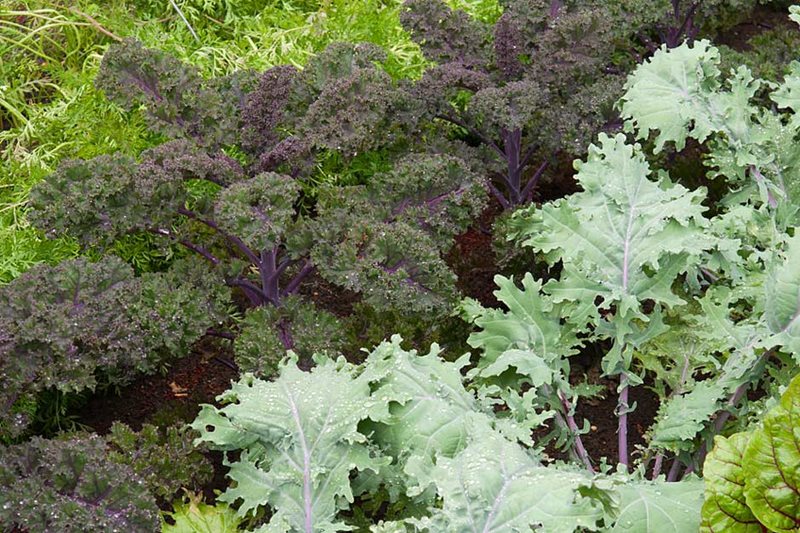From humble origins, kale has now become super trendy thanks to its healthy nutritional credentials
 At a glance...
At a glance...
Botanical name: Brassica oleracea (Acephala Group)
Origins: Both the ancient Greeks and Romans ate leafy greens - believed to be ancestors of the kale varieties we eat today - consuming them as medicine as well as food. By the Middle Ages, kale had widely spread through Europe and Asia
First cultivated: Kale has been cultivated for more than 2000 years
Types: There are numerous varieties of kale, popular ones include: 'Cavolo Nero', 'Curly Scarlet', 'Redbor' and 'Red Russian'
Skill level: Easy / intermediate
Preferred location and conditions: Kale tolerates most conditions but requires nitrogen-rich, free-draining soil
Good for containers: Yes
Harvest time: September to May
Planting and growing: Sow seeds from March to June, ensuring the soil remains moist. Flat leaved kales should be sown in situ but you can start off curly varieties in modules. Plant out from May to July at spacings of at least 45cm (18in), ‘puddling’ the plants with plenty of water
Possible problems: Birds can be a problem, so it’s advisable to net the plants
Did you know?
Kale is an excellent addition to any vegetable garden. Hardy and disease-resistant, it can adapt to most conditions and is one of the easiest brassicas to grow. It is also one of the most nutrient-rich. Hailed as a superfood, a serving of kale* contains more absorbable calcium than a small carton of semi-skimmed milk. It’s low in calories, high in fibre and packed full of antioxidants. It’s high in vitamins A, C, E and K and rich in folate, magnesium, iron and potassium. Regular consumption of kale as part of a healthy, balanced diet is said to be beneficial for the brain, heart, bones, skin, eyes and hair and has been linked to lowering the risk of cancer, heart disease and diabetes.
In much of Europe, kale was once the most widely-eaten green vegetable. It thrives in cold climates because of its resistance to frost (which makes it taste sweeter), and was so commonly eaten in Scotland, that ‘kail’ became the generic word for dinner and all kitchens featured a ‘kail-pot’ for cooking. ‘Kailyard’ was a Scottish colloquialism for vegetable garden, and the term lent itself to the Kailyard School of Literature, a critically-reviled group of Scottish writers (including Peter Pan author, J M Barrie) who revelled in sentimental descriptions of life in rural Scotland in the late 19th century.


Kale slipped out of fashion after the Middle Ages, when cabbages became more popular. Despite a brief renaissance during the Dig for Victory campaign of World War II, people stopped eating kale, and it was more commonly used in cattle feed. At the start of the 21st century, kale started to regain popularity, and after being named a ‘superfood’ in 2008, and with celebrity endorsements from the likes of Angelina Jolie and Gwyneth Paltrow, interest in the vegetable skyrocketed.
Kale remains one of the trendiest vegetables available, adapting itself to smoothies, salads, juices, stews, bakes and even cocktails (kalejito, anyone?) However, the British haven’t gone quite as cuckoo for kale as the Americans, who have not only devoted a national day to this highly-esteemed leaf (4th October 2018), but launched the first ever world kale-eating contest in 2016. Gideon Oji holds the current record, consuming 25 bowls of the vegetable in just eight minutes. And the obsession doesn’t end there; according to America’s Social Security Administration, 262 babies were named Kale in 2013.
Even if you’re not a fan of the vegetable on your dinner plate, there are ornamental varieties of kale available, with showy leaves in shades of pink and purple, which can add a welcome blush of colour to winter borders.
Text provided by Mr Fothergill's.
RHS Grow Your Own
RHS advice: How to grow kale
*serving size 100g

